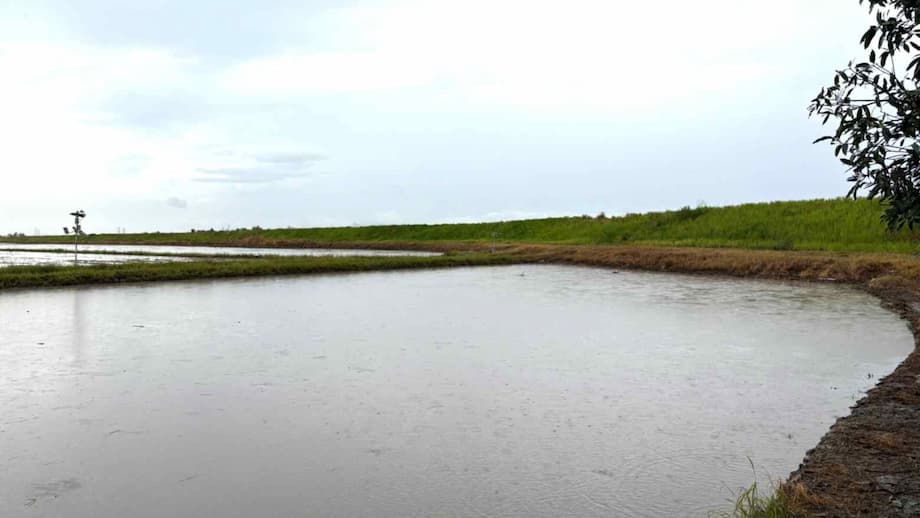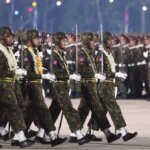Toshiba’s Weather Technology: A New Era for Malaysian Rice Farming
In a significant move for Southeast Asian agriculture, Toshiba Digital Solutions Corporation is expanding its cutting-edge weather forecasting services beyond Japan and into Malaysia. This initiative aims to help rice farmers in Malaysia anticipate and respond to sudden, heavy downpours that threaten their crops and livelihoods. By leveraging real-time radar data and artificial intelligence, Toshiba’s technology promises to transform how farmers manage water in their paddies, boosting both productivity and resilience in the face of climate change.
- Toshiba’s Weather Technology: A New Era for Malaysian Rice Farming
- Why Is Weather Forecasting Critical for Rice Farmers?
- How Does Toshiba’s Weather Data Service Work?
- Integrating AI and Digital Innovation in Agriculture
- Challenges and Opportunities Ahead
- Expert Perspectives: The Future of Smart Farming
- In Summary
Why Is Weather Forecasting Critical for Rice Farmers?
Rice farming is uniquely vulnerable to unpredictable weather. Sudden, localized rainstorms can flood paddies, damage young plants, and reduce yields. In Malaysia, where rice is a staple food and a key part of rural economies, these risks are growing more severe due to climate change. Traditional weather forecasts often lack the precision needed for farmers to take timely action, especially when storms are highly localized and develop quickly.
This is where Toshiba’s advanced Weather Data Service comes in. By providing highly accurate, hyperlocal forecasts, the service gives farmers and agricultural authorities the information they need to adjust water levels, open or close water gates, and protect their crops from damage.
Malaysia’s Smart Farming Flagship: Projek Ladang Padi IR4.0
The deployment of Toshiba’s weather technology is part of Malaysia’s flagship smart farming initiative, Projek Ladang Padi IR4.0. This project, led by the Muda Agricultural Development Authority (MADA) and supported by MyDIGITAL Corporation under the Ministry of Digital, aims to modernize rice cultivation through digital transformation. The goal is to integrate data-driven decision-making, artificial intelligence, and precision agriculture to make rice farming more efficient, sustainable, and resilient to climate shocks.
MADA, established in 1972, oversees the country’s largest agricultural development region and is at the forefront of efforts to boost rice productivity and rural economic growth. By partnering with Toshiba, MADA hopes to set a new standard for smart agriculture in the region.
How Does Toshiba’s Weather Data Service Work?
Toshiba’s Weather Data Service, first launched in Japan in May 2023, uses a combination of real-time radar data, proprietary analysis algorithms, and artificial intelligence to deliver highly accurate forecasts of localized heavy rainfall. The system ingests data from the Malaysian Meteorological Department and analyzes it to predict where and when sudden downpours are likely to occur.
When the system detects a high risk of flooding rain, it sends alerts to MADA and other stakeholders. These alerts enable quick action, such as adjusting water gates to control the flow of water into and out of rice paddies. This proactive approach can significantly reduce the risk of crop loss and help farmers make better decisions about irrigation, planting, and harvesting.
From Pilot Project to National Model
The current phase of the initiative is a pilot project, designed to test and refine the integration of Toshiba’s weather forecasting with MADA’s water management systems. If successful, the model could be scaled up across Malaysia and potentially exported to other rice-growing regions facing similar climate challenges.
Toshiba Digital Solutions Corporation stated, “We aim to contribute to global disaster prevention and mitigation by accurately forecasting atmospheric conditions and helping realize a safer, more resilient society.”
This vision aligns with Malaysia’s broader goals of digital transformation, food security, and climate resilience.
Integrating AI and Digital Innovation in Agriculture
The partnership between Toshiba, MyDIGITAL, and MADA is not just about weather forecasting—it’s part of a larger movement to bring artificial intelligence and digital technologies into Malaysian agriculture. The National AI Office Malaysia (NAIO), launched in December 2024 under the Ministry of Digital, is spearheading efforts to make Malaysia a regional leader in AI-driven solutions.
NAIO’s mission includes developing world-class AI talent, fostering ethical and inclusive AI, and creating real-world solutions for Malaysian challenges. The office is also organizing the ASEAN AI Malaysia Summit 2025, which will bring together leaders and innovators from across Southeast Asia to discuss responsible AI development and regional collaboration.
Benefits of AI-Powered Smart Farming
Integrating AI and advanced weather data into rice farming offers several tangible benefits:
- Improved crop yields: By optimizing irrigation and planting schedules, farmers can maximize productivity.
- Enhanced climate resilience: Accurate forecasts help farmers adapt to extreme weather, reducing losses from floods and droughts.
- Food security: Stable rice production supports national food supplies and rural livelihoods.
- Digital innovation: The project promotes the adoption of new technologies in agriculture, setting a precedent for other sectors.
These benefits are especially important as Malaysia seeks to strengthen its food security and position itself as a hub for digital innovation in Southeast Asia.
Challenges and Opportunities Ahead
While the promise of smart, AI-driven agriculture is great, there are challenges to overcome. Farmers need training and support to adopt new technologies. Infrastructure for data collection and communication must be robust and reliable. There are also questions about data privacy, ethical AI use, and ensuring that smallholder farmers are not left behind in the digital transition.
However, the collaboration between Toshiba, Malaysian government agencies, and local agricultural authorities demonstrates a strong commitment to addressing these challenges. By starting with pilot projects and building on local expertise, the initiative aims to create solutions that are both technologically advanced and grounded in the realities of Malaysian farming.
Regional and Global Implications
The success of Toshiba’s weather forecasting service in Malaysia could have ripple effects across Asia and beyond. Many rice-growing countries face similar challenges from climate change, including unpredictable rainfall and increased risk of flooding. If Malaysia’s smart farming initiative proves effective, it could serve as a model for other nations seeking to modernize agriculture and build climate resilience.
Moreover, the project highlights the growing role of public-private partnerships in driving digital transformation. By bringing together technology companies, government agencies, and local stakeholders, such collaborations can accelerate innovation and ensure that new solutions meet the needs of those on the ground.
Expert Perspectives: The Future of Smart Farming
Experts in agriculture and technology see the Toshiba-Malaysia partnership as a milestone in the evolution of smart farming. By combining advanced weather forecasting with AI-driven decision support, the project addresses both immediate risks (like sudden floods) and long-term challenges (like climate adaptation and food security).
According to a spokesperson from MyDIGITAL Corporation, “This collaboration is a step forward in our mission to build a digital, resilient, and sustainable agricultural sector. By leveraging AI and data, we empower farmers to make better decisions and secure their livelihoods against climate risks.”
Industry analysts also note that the integration of digital technologies in agriculture is essential for meeting the demands of a growing population and a changing climate. As more countries invest in smart farming, the lessons learned in Malaysia could inform best practices worldwide.
In Summary
- Toshiba is expanding its advanced weather forecasting services to Malaysia, aiming to help rice farmers manage the risks of sudden, heavy rainfall.
- The initiative is part of Malaysia’s smart farming flagship, Projek Ladang Padi IR4.0, led by MADA and supported by MyDIGITAL Corporation.
- Toshiba’s Weather Data Service uses real-time radar data and AI to deliver hyperlocal forecasts, enabling timely action to protect crops.
- The project integrates digital innovation and AI into agriculture, with support from the National AI Office Malaysia and broader government efforts.
- Benefits include improved crop yields, enhanced climate resilience, and support for food security and rural development.
- Challenges remain in training, infrastructure, and ensuring equitable access, but the initiative sets a precedent for smart, climate-resilient agriculture in the region.












